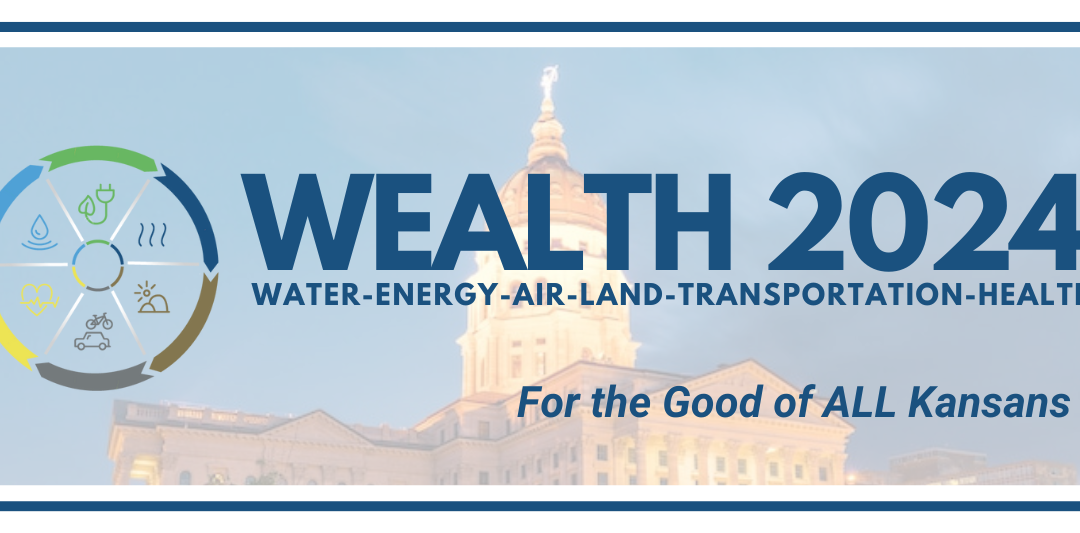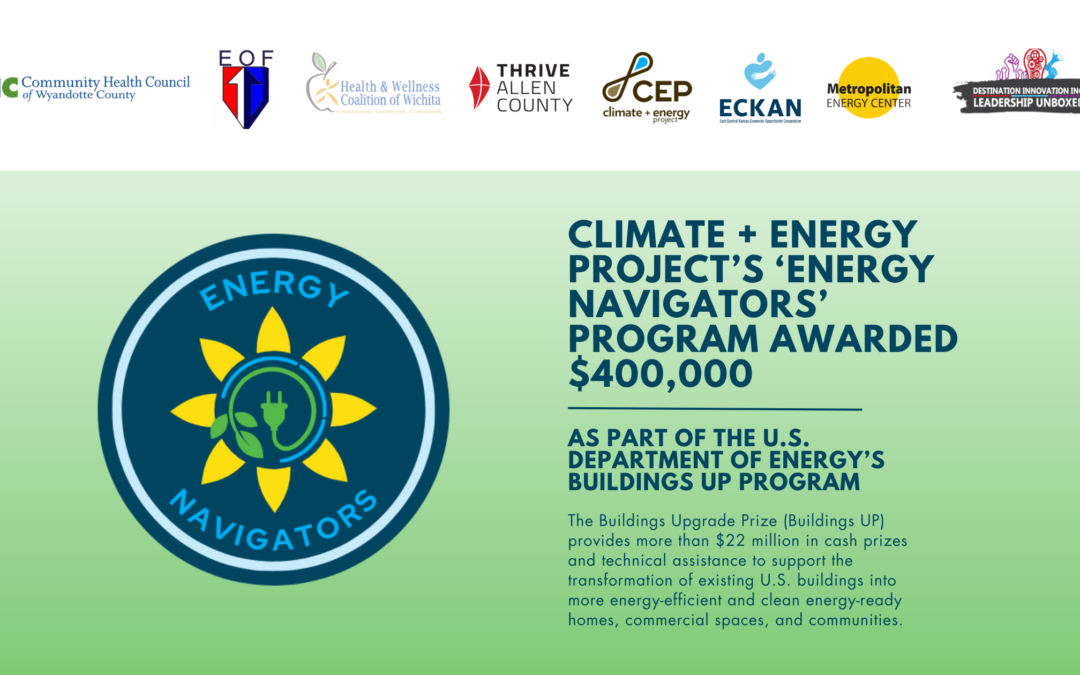By: Jamie Hofling
The Kansas River (a.k.a the Kaw), May 10, 2019, moving at about 76,000 cfs (cubic feet per second).
While our primary focus at CEP is on energy issues, over the years we’ve been drawing more connections to related topics such as extreme weather and community resilience. CEP’s Kansas WEALTH project holds that by protecting Kansas WEALTH resources; water, energy, air, land, transportation, and health, we build resilient communities. With the month of May being the wettest on record for Kansas – floods, resilience, and preparedness have been on my mind.
I live in a community adjacent to the Kansas River. Like the local wildlife, the river is what drew many of us here. We coexist with nesting eagles, mama and baby foxes, and a river that separates us from the more urban part of town. Not long after relocating here I started hearing stories about the floods, especially the 1951 & 1993 floods. The Levee Cafe, a local diner that opened the same year we bought our house, hung black & white photos of the 1951 flood on its walls. The North Lawrence community is proud of its history of survival.
In March 18, 2019, major flooding started in Nebraska and Iowa. Just ten days later, our very active community Facebook page started posting warnings about how the conditions were shaping up like they did in 1993. Fear set in and the conversations moved away from the normalcy of roaming dogs and cats to breaching levees and filing flood insurance. The MO river was out of its banks from snow melt in the west and the spring rains hadn’t even begun in Kansas. Reservoirs were filling up and the Army Corps of Engineers was unable to release water due to water levels at downstream targets.
Some community members responded that they were “unbothered”, others expressed panic, while some asked questions determined to be prepared.
Facebook post. Ted, is our unofficial North Lawrence mayor.
In mid May, the Army Corps of Engineers started holding press conferences to publicly announce flood water management plans for Tuttle Creek, Milford, Perry, and Clinton, the 4 reservoirs that flow into the Kansas River. The primary takeaway being that flood water management is directed by a manual that’s more than 60 years old.
Being aware is the first step in being prepared. I’m managing my flood anxiety by being aware of what’s going on with water levels. I encourage anyone who lives near a waterway to familiarize yourself with these resources to stay aware of how the waterways are being managed and any threats in your area. It’s also immensely valuable to stay weather aware. I use a NOAA weather radio which can be purchased online.
The Hydrograph is one of the best resources, measuring water levels and indicating what the different levels mean. The link below is set for the gauge at the Kansas River in Lawrence. There are several measuring points along waterways, you’ll want to select the one closest to you. https://water.weather.gov/ahps2/hydrograph.php?gage=lwrk1&wfo=top
Here’s some information on how to use the site:
The graph on the page shows the trajectory of the river water levels, where it’s been, where it is currently, where it’s projected to be, and when it’s projected to crest – which means plateau and recede. The Kansas River has been in or above the “action stage” since May of 2019.
Also the website has information on what to expect at varying flood levels. Note that “flood” doesn’t necessarily mean residences and streets will be flooded. The numbers below represent water levels in feet and the text indicates impacts and action taken.
Burcham Park in Lawrence, KS, May 9, 2019.
Here are other helpful resources:
This is a great video explanation of the reservoirs that control the flow of water into the Kansas R., which would be similar to how other waterways are managed by the Army Corp of Engineers. https://www.kansascity.com/latest-news/article230775974.html
The USGS water flow alert system is for your phone. If you choose to use it, set it for 50,000 CFS and start paying attention to what’s happening upstream especially the capacity levels of the reservoirs. https://water.usgs.gov/waternow/?fbclid=IwAR0ssLpciHrs6qsb0Gl2XVC7WWPapYE-zqOYBMTcz5f1trhB1Mjg0fGlTuY
The FEMA flood map indicates where floodplains are, searchable by address. https://msc.fema.gov/portal/search?AddressQuery=North%20Lawrence%20Kansas&fbclid=IwAR3ULvcyK1ke9zof467ECRWsxmjJdBdE0u2PICSGqREN_XGwQmGe5uQlKyM#searchresultsanchor
Watching water levels and monitoring weather has become more of a regular routine for me, and it started with finding out what I needed to know and where to monitor conditions. Being equipped with this information, I’m more confident about how to deal with potential floods. And CEP is committed to empowering communities by sharing information such as this to help strengthen and build resilience within them.


